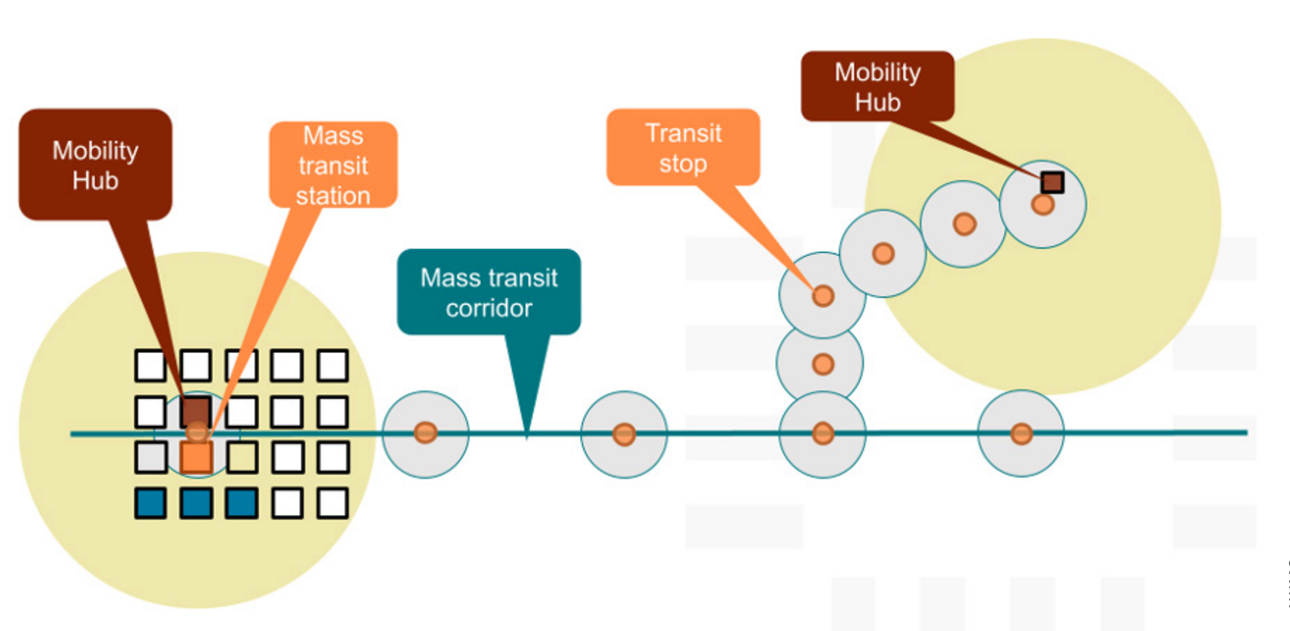- English
- 中文 (Chinese)
- Français (French)
- Deutsch (German)
- 日本語 (Japanese)
- Español (Spanish)
サンアントニオのモビリティ ハブ: 公平性と持続可能性への道
このレポートは、複数の利害関係者による作業のプロセスと結果を示しています—ULI、VIA、およびサンアントニオ市が主導し、公共、民間、および市民セクターの複数の利害関係者が参加するNUMOによってサポートされています。—これは、市内のモビリティ ハブを特定し、市内の住民が機会、商品、サービスへのアクセスを増やすことができる代表的な場所を評価するプロセスを開発することを目的としており、公平性の向上と脆弱性の軽減に特に重点を置いています。これは、居住者が手頃な価格のモビリティで必要な場所や行きたい場所に移動できるようにする、モビリティ ハブのネットワークを実現するための最初の、しかし重要なステップです。
サンアントニオのモビリティ ハブの可能性を特定するプロセスには、次の5つのステップが含まれます。
1.サンアントニオ市の主要パートナーおよびVIAメトロポリタン トランジットとアイデアをブレインストーミングし、都市に適したモビリティ ハブの集合的な定義に到達します。
2.最近の市全体の計画、交通機関の計画、政策、地域社会の関与から引き出された価値についての議論と、モビリティ ハブ サイト選択の基準と指標にそれらをどのように反映できるかの決定。
3.定義と値を一連の基準に変換する方法を改良するための技術的作業。これらは後で地理情報システム (GIS) 分析で分析されました。
4.潜在的なモビリティハブの場所へのサイト訪問と関連する利害関係者へのインタビューによって補完される追加の分析。
5.最初の結果と次のステップについての議論。将来は有望であり、短期的にも長期的にもモビリティ ハブの実装を達成するための措置を講じることができます。
パネリスト議長:
ジョン・ベイリー
パネリスト:
- ハリエット・トレゴニング
- カルロス・パルドス
- シャファク・チョウドリー
- ハビエル・パレデス
- ダニエル・リール
- デビッド・アデルマン
- テイラー・ドーソン
- カミー・ホーン
- マンジリ・アカルコトカル
- ジェイコブ・フロイド
このレポートは、複数の利害関係者による作業のプロセスと結果を示しています—ULI、VIA、およびサンアントニオ市が主導し、公共、民間、および市民セクターの複数の利害関係者が参加するNUMOによってサポートされています。—これは、市内のモビリティ ハブを特定し、市内の住民が機会、商品、サービスへのアクセスを増やすことができる代表的な場所を評価するプロセスを開発することを目的としており、公平性の向上と脆弱性の軽減に特に重点を置いています。これは、居住者が手頃な価格のモビリティで必要な場所や行きたい場所に移動できるようにする、モビリティ ハブのネットワークを実現するための最初の、しかし重要なステップです。
サンアントニオのモビリティ ハブの可能性を特定するプロセスには、次の5つのステップが含まれます。
1.サンアントニオ市の主要パートナーおよびVIAメトロポリタン トランジットとアイデアをブレインストーミングし、都市に適したモビリティ ハブの集合的な定義に到達します。
2.最近の市全体の計画、交通機関の計画、政策、地域社会の関与から引き出された価値についての議論と、モビリティ ハブ サイト選択の基準と指標にそれらをどのように反映できるかの決定。
3.定義と値を一連の基準に変換する方法を改良するための技術的作業。これらは後で地理情報システム (GIS) 分析で分析されました。
4.潜在的なモビリティハブの場所へのサイト訪問と関連する利害関係者へのインタビューによって補完される追加の分析。
5.最初の結果と次のステップについての議論。将来は有望であり、短期的にも長期的にもモビリティ ハブの実装を達成するための措置を講じることができます。
パネリスト議長:
ジョン・ベイリー
パネリスト:
- ハリエット・トレゴニング
- カルロス・パルドス
- シャファク・チョウドリー
- ハビエル・パレデス
- ダニエル・リール
- デビッド・アデルマン
- テイラー・ドーソン
- カミー・ホーン
- マンジリ・アカルコトカル
- ジェイコブ・フロイド


